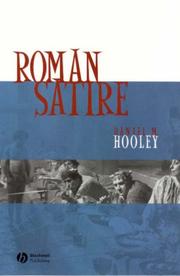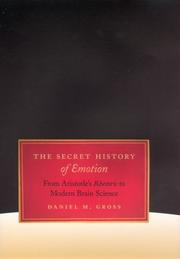| Listing 1 - 10 of 31 | << page >> |
Sort by
|

ISBN: 052187064X 9780521870641 9780511487965 9780521187381 9780511261503 0511261500 0511487967 0511259735 9780511259739 0511260938 9780511260933 9780511260384 0511260385 0521187389 1107171741 1280749482 0511320442 Year: 2007 Volume: 139 Publisher: Cambridge : Cambridge University Press,
Abstract | Keywords | Export | Availability | Bookmark
 Loading...
Loading...Choose an application
- Reference Manager
- EndNote
- RefWorks (Direct export to RefWorks)
In this 2006 text, Daniel M. Gurtner examines the meaning of the rending of the veil at the death of Jesus in Matthew 27:51a by considering the functions of the veil in the Old Testament and its symbolism in Second Temple and Rabbinic Judaism. Gurtner incorporates these elements into a compositional exegesis of the rending text in Matthew. He concludes that the rending of the veil is an apocalyptic assertion like the opening of heaven revealing, in part, end-time images drawn from Ezekiel 37. Moreover, when the veil is torn Matthew depicts the cessation of its function, articulating the atoning role of Christ's death which gives access to God not simply in the sense of entering the Holy of Holies (as in Hebrews), but in trademark Matthean Emmanuel Christology: 'God with us'. This underscores the significance of Jesus' atoning death in the first gospel.
Veil of the Temple (Jerusalem) --- Bible. --- Bible. N.T. Evangiles. Matthieu (anglais). 2007. Gurtner, D. --- 226.2 --- 225*5 --- Curtain of the Temple (Jerusalem) --- Inner Veil of the Temple (Jerusalem) --- Parokhet (Jerusalem) --- Temple Curtain (Jerusalem) --- Temple Veil (Jerusalem) --- Draperies --- Evangelie volgens Matteüs --- Laatste avondmaal. Proces van Jezus. Lijden. Kruisiging --- 225*5 Laatste avondmaal. Proces van Jezus. Lijden. Kruisiging --- Veils. --- Headgear --- Hijab (Islamic clothing) --- Bible --- Evangelie volgens Matteus --- Evangelie volgens Matthéüs --- Matʻae pogŭm --- Matai den --- Matai ni yoru fukuinsho --- Matius (Book of the New Testament) --- Mattá --- Matteo (Book of the New Testament) --- Matteus --- Matthäusevangelium --- Matthéüs --- Matthew (Book of the New Testament) --- Matthieu (Book of the New Testament) --- Criticism, interpretation, etc. --- Arts and Humanities --- Religion

ISBN: 1405106891 9781405106894 9781405106887 1405106883 0470776269 9786611310998 1281310999 0470777087 Year: 2007 Volume: *3 Publisher: Oxford: Blackwell,
Abstract | Keywords | Export | Availability | Bookmark
 Loading...
Loading...Choose an application
- Reference Manager
- EndNote
- RefWorks (Direct export to RefWorks)
Satire, Latin --- History and criticism. --- History and criticism --- Satire, Latin - History and criticism.

ISBN: 9780226309798 9780226309804 0226309797 0226309800 1281957046 9786611957049 0226309932 9780226309934 Year: 2007 Publisher: Chicago, Ill. : Bristol : University of Chicago Press ; University Presses Marketing [distributor],
Abstract | Keywords | Export | Availability | Bookmark
 Loading...
Loading...Choose an application
- Reference Manager
- EndNote
- RefWorks (Direct export to RefWorks)
Princess Diana's death was a tragedy that provoked mourning across the globe; the death of a homeless person, more often than not, is met with apathy. How can we account for this uneven distribution of emotion? Can it simply be explained by the prevailing scientific understanding? Uncovering a rich tradition beginning with Aristotle, The Secret History of Emotion offers a counterpoint to the way we generally understand emotions today. Through a radical rereading of Aristotle, Seneca, Thomas Hobbes, Sarah Fielding, and Judith Butler, among others, Daniel M. Gross reveals a persistent intellectual current that considers emotions as psychosocial phenomena. In Gross's historical analysis of emotion, Aristotle and Hobbes's rhetoric show that our passions do not stem from some inherent, universal nature of men and women, but rather are conditioned by power relations and social hierarchies. He follows up with consideration of how political passions are distributed to some people but not to others using the Roman Stoics as a guide. Hume and contemporary theorists like Judith Butler, meanwhile, explain to us how psyches are shaped by power. To supplement his argument, Gross also provides a history and critique of the dominant modern view of emotions, expressed in Darwinism and neurobiology, in which they are considered organic, personal feelings independent of social circumstances. The result is a convincing work that rescues the study of the passions from science and returns it to the humanities and the art of rhetoric.
Emotions -- Psychological aspects. --- Emotions - Social aspects - History. --- Emotions -- Social aspects -- History. --- Emotions -- Social aspects. --- Emotions (Philosophy) - History. --- Emotions (Philosophy) -- History. --- Emotions (Philosophy) --- Emotions --- Feelings --- Human emotions --- Passions --- Psychology --- Affect (Psychology) --- Affective neuroscience --- Apathy --- Pathognomy --- Philosophy --- History --- Social aspects&delete& --- History. --- Social aspects --- Emotions (Philosophie) --- Aspect social --- Histoire --- Social aspects. --- emotion, affect, feeling, mind and body, masculinity, femininity, gender, aristotle, neuroscience, science, philosophy, psychology, judith butler, sarah fielding, thomas hobbes, seneca, human nature, power, social conditioning, construction, hierarchy, empathy, stoicism, neurobiology, darwinism, rhetoric, scarcity, apathy, passion, passivity, war, hume, pride, compassion, adam smith, william perfect, david simple, cognition, nonfiction.
Book
ISBN: 013231777X 9780132317771 Year: 2007 Publisher: Upper Saddle River Pearson
Abstract | Keywords | Export | Availability | Bookmark
 Loading...
Loading...Choose an application
- Reference Manager
- EndNote
- RefWorks (Direct export to RefWorks)

ISBN: 1281018244 9786611018245 1599964074 9781599964072 9780874259339 0874259339 Year: 2007 Publisher: Amherst, Mass. : HRD Press,
Abstract | Keywords | Export | Availability | Bookmark
 Loading...
Loading...Choose an application
- Reference Manager
- EndNote
- RefWorks (Direct export to RefWorks)
The ultimate solution for developing highly trained employees and achieving organizational success. Strategic Training: Putting Employees First. Daniel Wentland. Your organization’s survival depends on employee training – to brush off the importance of upgrading the skills of your employees is a dangerous strategic mistake. Based upon the STEM model, this book will show organizational decision-makers and human resource practitioners how to make quality employee training an integral part of the strategic planning process – and ensure the competitiveness of the organization. St
Employees --- Strategic planning. --- Goal setting (Strategic planning) --- Planning, Strategic --- Strategic intent (Strategic planning) --- Strategic management --- Planning --- Business planning --- Employee development --- Employee training --- Employees, Training of --- In-service training --- Inservice training --- On-the-job training --- Training of employees --- Training within industry --- Vestibule schools --- Occupational training --- Employer-supported education --- Training of.
Book
Year: 2007 Publisher: Cambridge, Mass. National Bureau of Economic Research
Abstract | Keywords | Export | Availability | Bookmark
 Loading...
Loading...Choose an application
- Reference Manager
- EndNote
- RefWorks (Direct export to RefWorks)
Book
Year: 2007 Publisher: Cambridge, Mass. National Bureau of Economic Research
Abstract | Keywords | Export | Availability | Bookmark
 Loading...
Loading...Choose an application
- Reference Manager
- EndNote
- RefWorks (Direct export to RefWorks)
Digital
Year: 2007 Publisher: Cambridge, Mass. NBER
Abstract | Keywords | Export | Availability | Bookmark
 Loading...
Loading...Choose an application
- Reference Manager
- EndNote
- RefWorks (Direct export to RefWorks)
Digital
Year: 2007 Publisher: Cambridge, Mass. NBER
Abstract | Keywords | Export | Availability | Bookmark
 Loading...
Loading...Choose an application
- Reference Manager
- EndNote
- RefWorks (Direct export to RefWorks)
Book
Year: 2007 Publisher: Cambridge National Bureau Of Economic Research.
Abstract | Keywords | Export | Availability | Bookmark
 Loading...
Loading...Choose an application
- Reference Manager
- EndNote
- RefWorks (Direct export to RefWorks)
| Listing 1 - 10 of 31 | << page >> |
Sort by
|

 Search
Search Feedback
Feedback About UniCat
About UniCat  Help
Help News
News